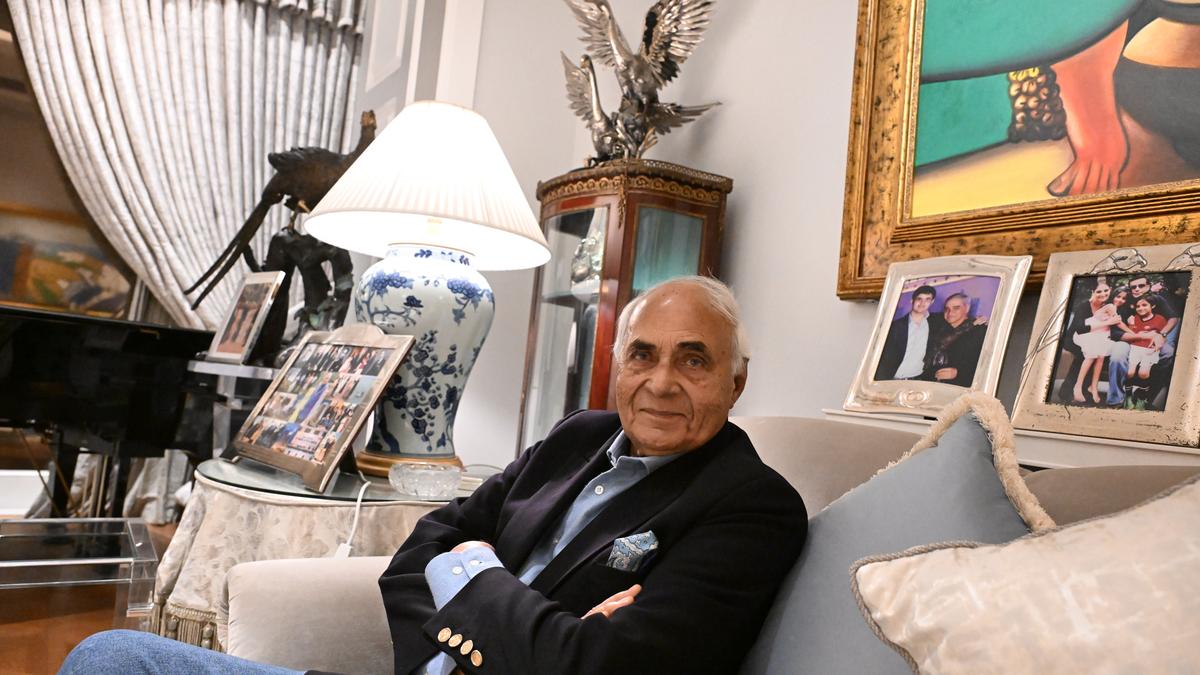
K.P. Singh: Think like Edwin Lutyens
The Hindu
Real estate baron K.P. Singh of DLF says visionary collaborations and urgent action plans are imperative to save our cities from falling into a deeper chaos
The distance between DLF Golf and Country Club, Gurugram, and West End Greens, a posh locality in South Delhi is 17 km and roughly takes 33 minutes on the Delhi-Gurugram Expressway. But during a recent trip, when property baron K.P. Singh was caught in the labyrinthine traffic en route, the interminable delay on the four-lane highway gnawed at him. For, this was not quite how the man from Bulandshahr, who transformed erstwhile Gurgaon into the millennium city it is today, had envisioned it.
“It was meant to be a sprawling green organised metropolis and a blueprint for the future. Not just bricks and concrete. There’s been myopic thinking; our cities are crumbling under their own weight,” said the developer, who saw Gurgaon’s potential as a world class city three decades ago and scripted DLF’s success.
During a chat at his Aurangzeb Road residence in Delhi recently, Singh, 93, minced no words to express his frustration at the high-tech city besieged by drainage problems, flooding, traffic congestion, pollution and water shortage that collectively affected the quality of life.
Singh believes in living his life unapologetically. Known for taking prudent risks, in his book he pens down the challenges he navigated to transform DLF into a real estate giant. The book highlights his leadership skills and resilience in achieving success.
“Urban planning has to be done 100 years in advance with the town planners’ understanding of what citizens will require and want in future. The planning process is dictated by the people; cities should be able to stand up to scrutiny even decades later,” he said, citing the development of DLF Phase 5 in Gurugram, the first in India accredited with LEED (Leadership in Energy and Environmental Design) platinum certification, as an example of sustainable, dynamic and responsible living. But inside and outside the super luxury homes are two different worlds.
“The local master plan should be a legacy addressing critical imperatives that make cities robust enough to weather the storms of rapid urban evolution,” Singh asserted. Gurugram witnessed a wild building boom without a comprehensive master plan for the city’s development. While developers built the infrastructure inside their projects, the Haryana Urban Development Authority failed to match the unstoppable growth.
Singh changed the country’s landscape over the last three decades but the lack of a well-functioning citywide infrastructure reduced Gurugram to a city of pitfalls that now evokes discussions on how not to build a city.

The Karnataka government has drafted a comprehensive master plan for the integrated development of Kukke Subrahmanya temple, the State’s highest revenue-generating temple managed by the Hindu Religious Institutions and Charitable Endowments Department. The redevelopment initiative is estimated to cost around ₹254 crore and aims to enhance infrastructure and facilities for devotees.












